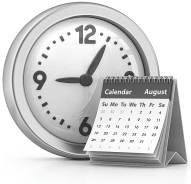An inspection of your vehicle during fall months will go a long way toward ensuring safety and dependability when temperatures drop, and severe winter weather strikes. A routine maintenance program also makes financial sense, extending useful vehicle life and helping avoid costly repairs down the road.
When you schedule with USA Automotive, we will examine these top 10 items in your vehicle:
- Check all fluids, including engine oil, power steering, brake, and transmission as well as windshield washer solvent and antifreeze/coolant.
- Check the hoses and belts to make sure they are not cracked, brittle, frayed, loose or showing signs of excessive wear.
- Check the battery and replace if necessary. Make sure the connection is clean, tight and corrosion-free.
- Check the brake system annually and have the brake linings, rotors and drums inspected at each oil change.
- Inspect the exhaust system for leaks, damage and broken supports or hangers if there is an unusual noise. Exhaust leaks can be dangerous and must be corrected without delay.
- Schedule a tune-up to help the engine deliver the best balance of power and fuel economy and produce the lowest level of emissions.
- Check the heating, ventilating and air conditioning (HVAC) system as proper heating and cooling performance is critical for interior comfort and for safety reasons such as defrosting.
- Inspect the steering and suspension system annually including shock absorbers, struts and chassis parts such as ball joints, tie rod ends and other related components.
- Check the tires, including tire pressure and tread. Uneven wear indicates a need for wheel alignment. Tires should also be checked for bulges and bald spots.
- Check the wipers and lighting so that you can see and be seen. Check that all interior and exterior lighting is working properly and replace worn wiper blades so you can see clearly when driving during precipitation.
 Mon-Fri: 8:00am-5:30pm
Mon-Fri: 8:00am-5:30pm
 (773) 238-1333
(773) 238-1333




 Sign-up today for service interval reminders such as: oil & filter, brakes, tires, and more... These parts are designed to wear & need to be replaced before any major damage occurs. We can help.
Sign-up today for service interval reminders such as: oil & filter, brakes, tires, and more... These parts are designed to wear & need to be replaced before any major damage occurs. We can help.